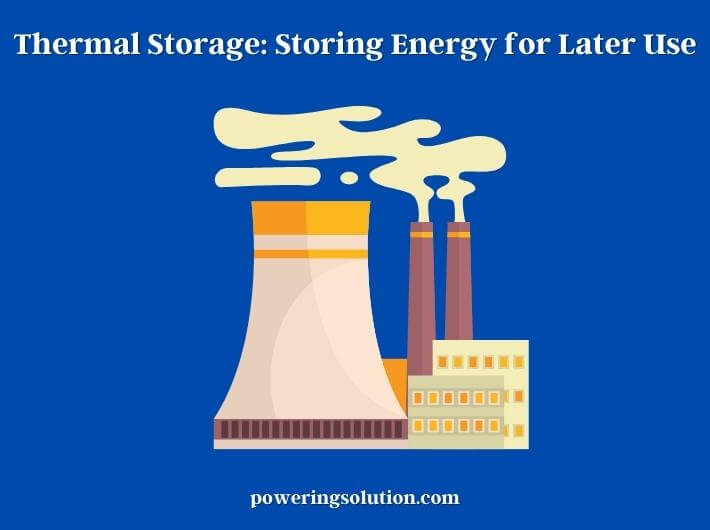Parabolic trough systems are a type of renewable energy technology that uses solar energy to generate electricity. This technology has gained popularity over the years due to its ability to generate clean and sustainable energy without producing harmful emissions. The parabolic trough system was first developed in the 1980s and has since been used in several large-scale power plants around the world.
The basic principle behind the parabolic trough system is to concentrate sunlight onto a receiver tube, which heats a fluid and creates steam to power a turbine and generate electricity. This process is known as solar thermal power, and it is one of the most efficient ways to generate electricity using solar energy.

We will provide an in-depth overview of how parabolic trough systems work, from the basic principles of solar thermal power to the intricate details of trough design and operation. We will also explore the advantages and disadvantages of this technology and answer some frequently asked questions about parabolic trough systems.
Solar Thermal Power: Basics and Principles
Solar thermal power is a type of renewable energy technology that uses sunlight to generate heat, which can be converted into electricity. There are three main types of solar thermal power technologies: parabolic troughs, power towers, and dish/engine systems. Parabolic troughs are the most commonly used solar thermal power technology and account for approximately 90% of the installed capacity.
The basic principle behind solar thermal power is to concentrate sunlight onto a receiver, which is usually a fluid-filled tube. The receiver absorbs the concentrated sunlight and heats up the fluid inside the tube. The heated fluid is then used to create steam, which drives a turbine to generate electricity.
The key component of any solar thermal power system is the solar collector, which is responsible for concentrating the sunlight onto the receiver. There are several different types of solar collectors, including parabolic troughs, power towers, and dish/engine systems. Each type of collector has its own unique design and operating principles.
Parabolic troughs use long, curved mirrors to concentrate sunlight onto a receiver tube. The mirrors are arranged in a parabolic shape, which allows them to focus sunlight onto a single point along the focal line of the mirror. The receiver tube runs along the focal line and is filled with a heat transfer fluid that is heated by the concentrated sunlight.

Power towers use a large field of mirrors called heliostats to concentrate sunlight onto a central receiver located on top of a tower. The receiver absorbs the concentrated sunlight and heats up a fluid, which is then used to create steam and generate electricity.
Dish/engine systems use a dish-shaped reflector to concentrate sunlight onto a small receiver located at the focal point of the dish. The receiver absorbs the concentrated sunlight and heats up a fluid, which is then used to create steam and generate electricity.
Solar thermal power is an efficient and sustainable way to generate electricity using solar energy. Parabolic troughs are the most commonly used solar thermal power technology and use long, curved mirrors to concentrate sunlight onto a receiver tube. The heated fluid is then used to create steam, which drives a turbine to generate electricity.
Details About Parabolic Trough System Components
A parabolic trough system is a type of solar thermal power technology that uses long, curved mirrors to concentrate sunlight onto a receiver tube. The receiver tube is filled with a heat transfer fluid, which is heated by the concentrated sunlight and used to generate steam to drive a turbine and generate electricity.
There are several components that make up a parabolic trough system, including:
- Parabolic Trough: The parabolic trough is the most visible component of the system and is made up of a series of long, curved mirrors that are arranged in a parabolic shape. The mirrors are made of highly reflective materials such as glass or metal and are designed to concentrate sunlight onto the receiver tube.
- Receiver Tube: The receiver tube is a long, cylindrical tube that runs along the focal line of the parabolic trough. It is filled with a heat transfer fluid, which is heated by the concentrated sunlight and used to generate steam to drive a turbine and generate electricity.
- Heat Transfer Fluid: The heat transfer fluid is used to absorb the concentrated sunlight and transfer the heat to the receiver tube. The most commonly used fluids in parabolic trough systems are synthetic oils and molten salts.
- Thermal Storage: Thermal storage allows the heat transfer fluid to be stored and used at a later time when there is no sunlight available. This is important for ensuring a consistent supply of electricity, even when sunlight is not available.
- Turbine: The turbine is the component that generates electricity by converting the steam generated by the heated fluid into mechanical energy.
- Generator: The generator converts the mechanical energy produced by the turbine into electrical energy.
- Control System: The control system is responsible for managing the operation of the parabolic trough system, including tracking the movement of the sun, controlling the flow of the heat transfer fluid, and managing the storage and use of thermal energy.
How do the Troughs Work?
Parabolic troughs work by using long, curved mirrors to concentrate sunlight onto a receiver tube that runs along the focal line of the trough. The receiver tube is filled with a heat transfer fluid that is heated by the concentrated sunlight and used to generate steam to drive a turbine and generate electricity.
The parabolic troughs are aligned in rows, with each trough tracking the movement of the sun throughout the day to maximize the amount of sunlight that is captured. The mirrors are curved in such a way that they concentrate sunlight onto a single point along the focal line of the trough, where the receiver tube is located.
The heat transfer fluid is pumped through the receiver tube and is heated by the concentrated sunlight. As the fluid is heated, it expands and moves through a series of heat exchangers to generate steam. The steam is then used to drive a turbine, which in turn drives a generator to produce electricity.
One of the advantages of parabolic trough systems is that they are able to store thermal energy, which allows them to continue generating electricity even when there is no sunlight available. The heat transfer fluid can be stored in large tanks, where it can be used to generate steam and drive the turbine during periods of low sunlight or at night.
Parabolic troughs are an efficient and sustainable way to generate electricity using solar energy. They are able to capture and concentrate large amounts of sunlight, which can be used to generate steam and drive a turbine to produce electricity. The ability to store thermal energy allows them to continue generating electricity even when there is no sunlight available, making them a reliable source of renewable energy.
Tracking the Sun: How the System Follows the Sun’s Path?
To maximize the amount of sunlight that is captured, parabolic trough systems are designed to track the movement of the sun throughout the day. This is accomplished through the use of tracking systems that allow the troughs to move from east to west as the sun moves across the sky.
There are two main types of tracking systems used in parabolic trough systems: single-axis and dual-axis. Single-axis tracking systems rotate the troughs around a single axis, allowing them to track the sun’s movement from east to west. Dual-axis tracking systems, on the other hand, are able to track the sun’s movement in both the east-west and north-south directions.

The tracking systems are controlled by a computerized control system that uses sensors to detect the position of the sun in the sky. The control system then adjusts the position of the troughs to ensure that they are always facing the sun and capturing the maximum amount of sunlight.
The use of tracking systems is critical to the efficiency of parabolic trough systems. By tracking the movement of the sun, the systems are able to capture the maximum amount of sunlight throughout the day, which allows them to generate more electricity. In addition, the use of tracking systems helps to reduce the amount of land that is required for a parabolic trough system, as the troughs can be placed closer together and still capture the maximum amount of sunlight.
The ability of parabolic trough systems to track the movement of the sun is one of their key advantages. By using tracking systems to capture the maximum amount of sunlight, these systems are able to generate more electricity and be more efficient, making them a reliable and sustainable source of renewable energy.
Thermal Storage: Storing Energy for Later Use
One of the key advantages of parabolic trough systems is their ability to store thermal energy, which allows them to generate electricity even when there is no sunlight available. Thermal storage systems are used to store the heat transfer fluid that is heated by the concentrated sunlight, allowing it to be used to generate steam and drive the turbine at a later time.

There are several types of thermal storage systems used in parabolic trough systems. One of the most common is a two-tank storage system, in which the heat transfer fluid is stored in two separate tanks: one hot tank and one cold tank. During periods of sunlight, the heat transfer fluid is pumped through the receiver tube and heated by the concentrated sunlight. The hot fluid is then stored in the hot tank, while the cooled fluid is stored in the cold tank. When electricity is needed, the hot fluid is pumped back through the heat exchangers to generate steam and drive the turbine.
Another type of thermal storage system is the single-tank storage system, in which the heat transfer fluid is stored in a single tank. This system uses a heat exchanger to separate the hot and cold fluid, allowing the hot fluid to be used to generate steam and drive the turbine while the cooled fluid is stored in the same tank.
Thermal storage systems are critical to the efficiency of parabolic trough systems. By storing thermal energy, these systems are able to generate electricity even when there is no sunlight available, making them a reliable and sustainable source of renewable energy. In addition, thermal storage systems allow parabolic trough systems to operate more efficiently, as they are able to generate electricity at a constant rate, rather than only when there is sunlight available.
Advantages and Disadvantages of Parabolic Trough Systems
Like any technology, parabolic trough systems have both advantages and disadvantages. Here are some of the key pros and cons to consider:
Advantages
- Reliable: Parabolic trough systems are a reliable source of renewable energy, as they are able to generate electricity even when there is no sunlight available through the use of thermal storage systems.
- Proven technology: Parabolic trough systems have been used for decades and are a proven technology for generating electricity from the sun.
- Scalable: Parabolic trough systems can be scaled up or down depending on the needs of the user, making them a flexible option for generating renewable energy.
- Low maintenance: Parabolic trough systems have few moving parts and require little maintenance, making them a cost-effective option for generating renewable energy.
- Cost-effective: While the initial cost of a parabolic trough system can be high, the long-term cost of generating electricity from these systems is low, making them a cost-effective option for generating renewable energy.
Disadvantages
- Land requirements: Parabolic trough systems require a significant amount of land to operate, which can be a limiting factor for some users.
- Water usage: Parabolic trough systems require a significant amount of water to operate, which can be a concern in areas with limited water resources.
- Weather dependent: Parabolic trough systems are dependent on sunlight to generate electricity, which means that they are not a reliable source of energy in areas with limited sunlight.
- High initial cost: While the long-term cost of generating electricity from a parabolic trough system is low, the initial cost of installing the system can be high.
- Limited efficiency: While parabolic trough systems are an effective way to generate renewable energy, they are not as efficient as other technologies such as photovoltaic solar panels.
While they have some limitations, they are a proven technology that can be used to generate sustainable and reliable electricity for a variety of applications.
Last Remarks
Parabolic trough systems are an important technology for generating renewable energy from the sun. By using reflective troughs to concentrate sunlight onto a receiver tube, these systems are able to heat a heat transfer fluid and generate electricity through the use of a steam turbine. With the ability to store thermal energy using thermal storage systems, parabolic trough systems are able to generate electricity even when there is no sunlight available, making them a reliable and sustainable source of energy.
While parabolic trough systems have some limitations, such as land and water requirements and weather dependence, they offer several advantages, such as scalability, low maintenance, and cost-effectiveness. In addition, parabolic trough systems are a proven technology that has been used for decades, making them a reliable option for generating renewable energy.
As the world continues to transition towards sustainable and renewable sources of energy, parabolic trough systems are likely to play an important role. By harnessing the power of the sun to generate electricity, these systems offer a sustainable and reliable alternative to traditional fossil fuel-based energy sources. With ongoing advancements in technology, it is likely that parabolic trough systems will become even more efficient and cost-effective in the years to come, making them an attractive option for generating renewable energy around the world.
Frequently Asked Questions & Answers about Parabolic Trough Systems
Are There Any Environmental Concerns Associated With Parabolic Trough Systems?
While parabolic trough systems are a sustainable and renewable source of energy, they can have environmental impacts such as land use and water consumption. However, these impacts can be mitigated through careful planning and management.
Can Parabolic Trough Systems Be Used in Areas With Limited Sunlight?
Parabolic trough systems are dependent on sunlight to generate electricity, which means that they are not a reliable source of energy in areas with limited sunlight.
How Much Does a Parabolic Trough System Cost to Install?
The cost of installing a parabolic trough system can vary depending on its capacity and location, but typically ranges from $3-5 per watt installed.
Can Parabolic Trough Systems Be Used for Residential or Small-scale Applications?
While parabolic trough systems are typically used for large-scale commercial applications, they can be scaled down for use in residential or small-scale applications.
